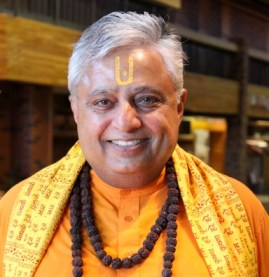Sanskrit Tools Hyderabad India


Bangalore India

You can stand in the middle of a crowded market in Bengaluru, Hyderabad, Chennai or Kochi and say that the common ancestor of the languages Kannada, Telugu, Tamil and Malayalam was brought to India by migrants from West Asia some 8,000 years ago, and no one is likely to care or protest. Apply to 73 Sanskrit Jobs in Delhi Ncr on Naukri.com, India's No.1 Job Portal. Explore Sanskrit job openings in Delhi Ncr Now!
India became independent in 1947, and in 1948 Hyderabad State was incorporated into it, acquiring a new national language, Hindi (Hindustani written in Sanskrit script). In 1956 the federal reorganization of Indian states along linguistic lines made Hyderabad city the capital of the Telugu-speaking state of Andhra Pradesh. The English and Foreign Languages University known as EFLU is a university for English and foreign languages located in Hyderabad. Hyderabad was founded in 1958 as the Central Institute of English by Pandit Jawaharlal Nehru, India’s first Prime Minister. India became independent in 1947, and in 1948 Hyderabad State was incorporated into it, acquiring a new national language, Hindi (Hindustani written in Sanskrit script). In 1956 the federal reorganization of Indian states along linguistic lines made Hyderabad city the capital of the Telugu-speaking state of Andhra Pradesh.
Wanted Tutors and Teachers for this Job - Urgently Require Class 11 Tutor at Home for Sanskrit in and around Sainikpuri, Hyderabad. Apply for Tutoring and Training Jobs for Class 11 Tuition in Sainikpuri, Hyderabad - Job ID 5060576. Find the most Qualified Experienced Trusted Sanskrit Tutors in Hyderabad. Get reviews, ratings and contact details of Sanskrit Teachers at UrbanPro. Sanskrit, a language of ancient India, is believed to be one of the oldest languages in the Indo-European family of languages.
Kolkata India
- Bharati, A., Kulkarni, A.P., Sheeba, V.: Building a wide coverage Sanskrit Morphological Analyser: A practical approach. In: The First National Symposium on Modelling and Shallow Parsing of Indian Languages, IIT-Bombay (2006)Google Scholar
- Bhat, G.M.: Samāsaḥ. Samskrita Bharati, Bangalore, Karnataka (2006)Google Scholar
- Fortes, F.C.L., Roxas, R.E.O.: Optimality Theory in Morphological Analysis. In: National Natural Language Processing Research Symposium (January 2004)Google Scholar
- Fosler, J.E.: On Reversing the Generation Process in Optimality Theory. In: Proceedings of the Association for Computational Linguistics (1996)Google Scholar
- Gillon, B.S.: Exocentric Compounds in Classical Sanskrit. In: Proceeding of the First International Symposium on Sanskrit Computational Linguistics (SCLS 2007), Paris, France (2007)Google Scholar
- Gillon, B.S.: Tagging Classical Sanskrit Compounds. In: Kulkarni, A., Huet, G. (eds.) Sanskrit Computational Linguistics. LNCS (LNAI), vol. 5406, pp. 98–105. Springer, Heidelberg (2009)CrossRefGoogle Scholar
- Hellwig, O.: Sanskrit Tagger: A Stochastic Lexical and POS Tagger for Sanskrit. In: Huet, G., Kulkarni, A., Scharf, P. (eds.) Sanskrit Computational Linguistics 2007/2008. LNCS (LNAI), vol. 5402, pp. 266–277. Springer, Heidelberg (2009)CrossRefGoogle Scholar
- Hellwig, O.: Extracting Dependency Trees from Sanskrit Texts. In: Kulkarni, A., Huet, G. (eds.) Sanskrit Computational Linguistics. LNCS (LNAI), vol. 5406, pp. 106–115. Springer, Heidelberg (2009)CrossRefGoogle Scholar
- Hoeks, J.C.J., Hendriks, P.: Optimality Theory and Human Sentence Processing: The Case of Coordination. In: Proceedings of the 27th Annual Meeting of the Cognitive Science Society, Erlbaum, Mahwah, NJ, pp. 959–964 (2005)Google Scholar
- Huet, G.: Shallow syntax analysis in Sanskrit guided by semantic nets constraints. In: Proceedings of International Workshop on Research Issues in Digital Libraries, Kolkata (2006)Google Scholar
- Huet, G.: Lexicon-directed Segmentation and Tagging of Sanskrit. In: XIIth World Sanskrit Conference, Helsinki, Finland (August 2003); Tikkanen, B., Hettrich, H. (eds.) Themes and Tasks in Old and Middle Indo-Aryan Linguistics, Motilal Banarsidass, Delhi, pp. 307–325 (2006)Google Scholar
- Huet, G.: Formal structure of Sanskrit text: Requirements analysis for a Mechanical Sanskrit Processor. In: Huet, G., Kulkarni, A., Scharf, P. (eds.) Sanskrit Computational Linguistics 2007/2008. LNCS (LNAI), vol. 5402, pp. 162–199. Springer, Heidelberg (2009)CrossRefGoogle Scholar
- Huet, G.: Sanskrit Segmentation. In: South Asian Languages Analysis Roundtable XXVIII, Denton, Ohio (October 2009)Google Scholar
- Jha, G.N., Mishra, S.K.: Semantic Processing in Pāṇini’s Kāraka System. In: Huet, G., Kulkarni, A., Scharf, P. (eds.) Sanskrit Computational Linguistics 2007/2008. LNCS (LNAI), vol. 5402, pp. 239–252. Springer, Heidelberg (2009)CrossRefGoogle Scholar
- Kulkarni, A.P., Shukla, D.: Sanskrit Morphological Analyser: Some Issues. To appear in Bh.K Festschrift volume by LSI (2009)Google Scholar
- Kulkarni, A.P., Kumar, A., Sheeba, V.: Sanskrit compound paraphrase generator. In: Proceedings of ICON 2009: 7th International Conference on Natural Language Processing. Macmillan Publishers, India (2009)Google Scholar
- Mahavira: Pādnini as Grammarian (With special reference to compound formation). Bharatiya Vidya Prakashan, Delhi (June 1978)Google Scholar
- Mittal, V.: Automatic Sanskrit Segmentizer using Finite State Transducers. In: Proceeding of Association for Computational Linguistics - Student Research Workshop (2010)Google Scholar
- Murty, M.S.: Sanskrit Compounds-A Philosophical Study. Chowkhamba Sanskrit Series Office, Varanasi, India (1974)Google Scholar
- Ishvarachandra, P.: Aṣtādhyāyī. Chaukhamba Sanskrit Pratisthan, Delhi (2004)Google Scholar
- Prince, A., Smolensky, P.: Optimality Theory: Constraint Interaction in Generative Grammar. In: RuCCS Technical Report 2 at Center for Cognitive Science, Rutgers University, Piscataway (1993)Google Scholar
- Sarma, E.R.S.: Maṇikaṇa: A Navya-Nyāya Manual. The Adyar Library and research Centre, Madras (1960)Google Scholar
- Scharf, P.M.: Levels in Pāṇini’s Aṣtādhyāyī. In: Kulkarni, A., Huet, G. (eds.) Sanskrit Computational Linguistics. LNCS (LNAI), vol. 5406, pp. 66–77. Springer, Heidelberg (2009)CrossRefGoogle Scholar
- Yuret, D., Biçici, E.: Modeling Morphologically Rich Languages Using Split Words and Unstructured Dependencies. In: ACL-IJCNLP, Singapore (2009)Google Scholar